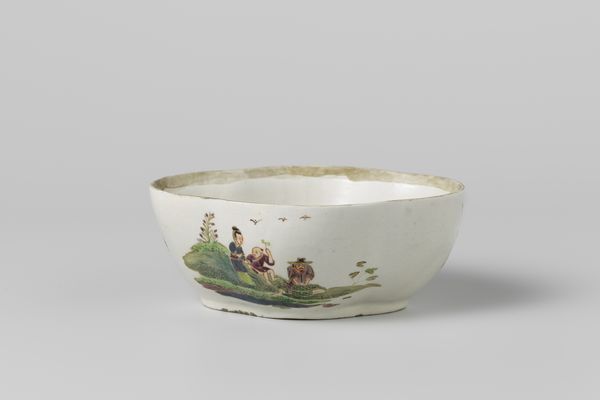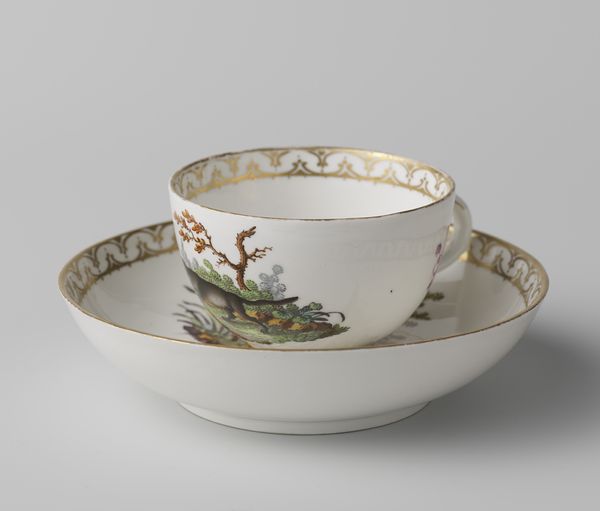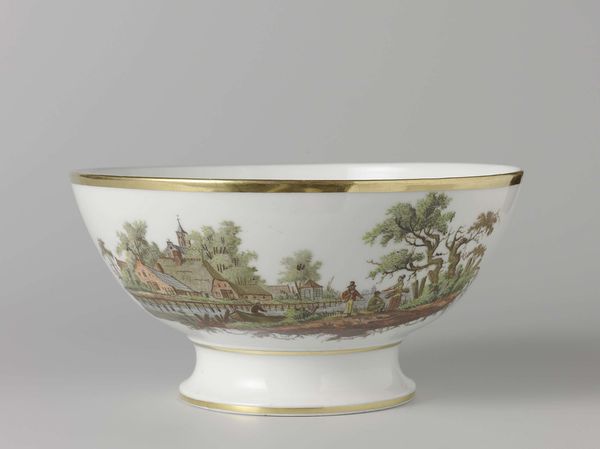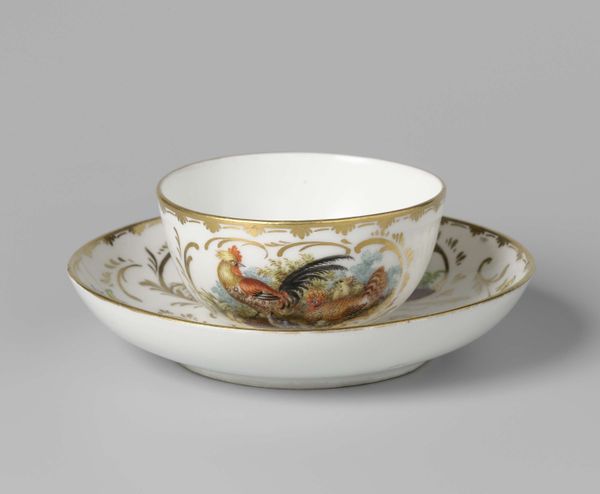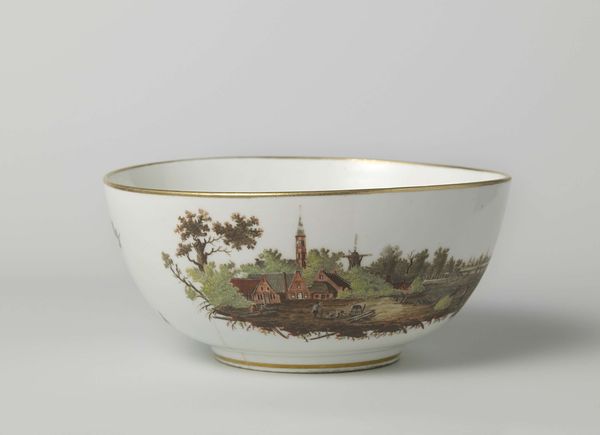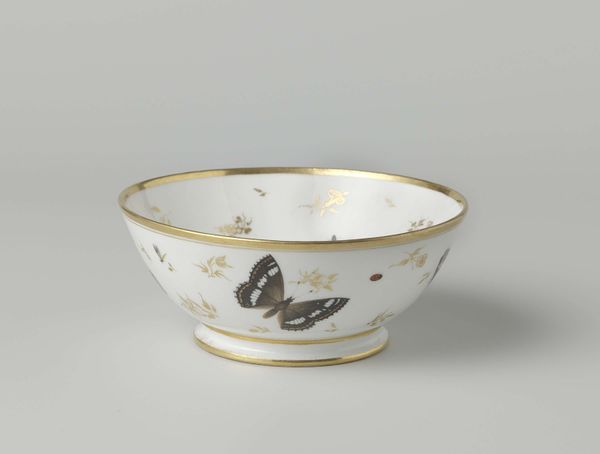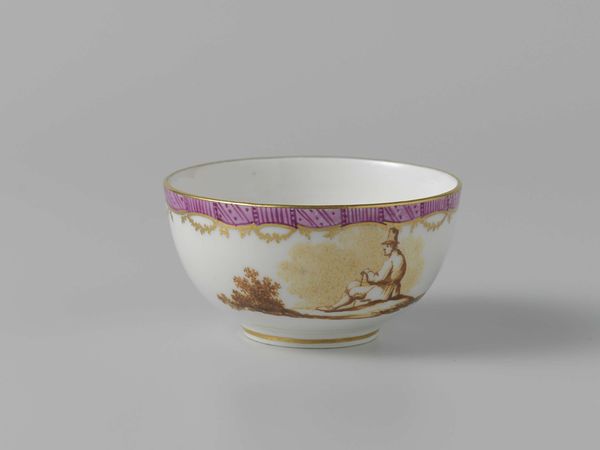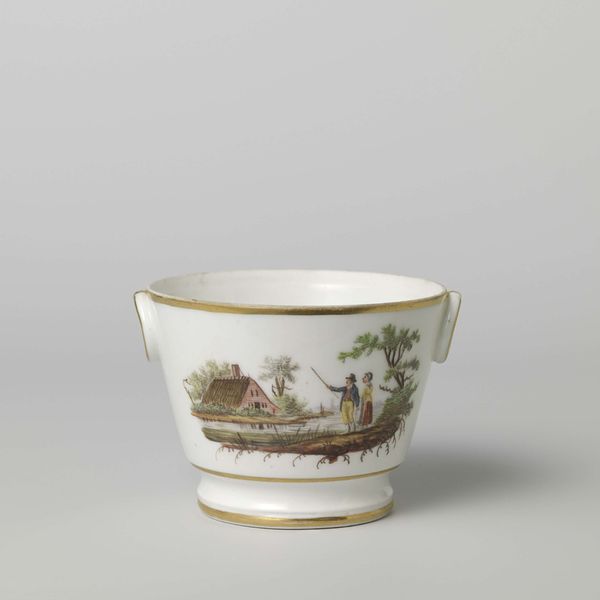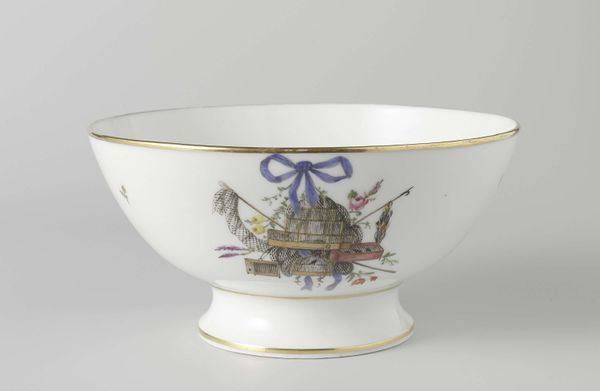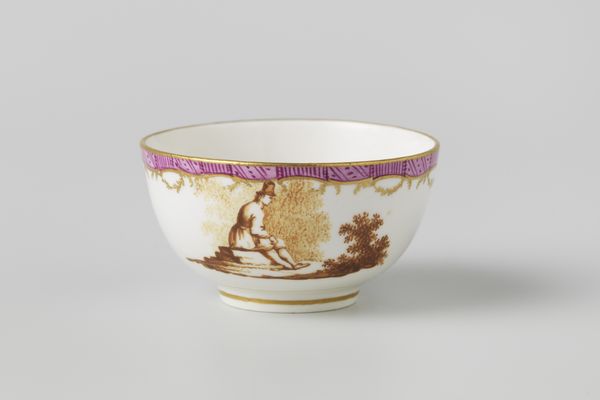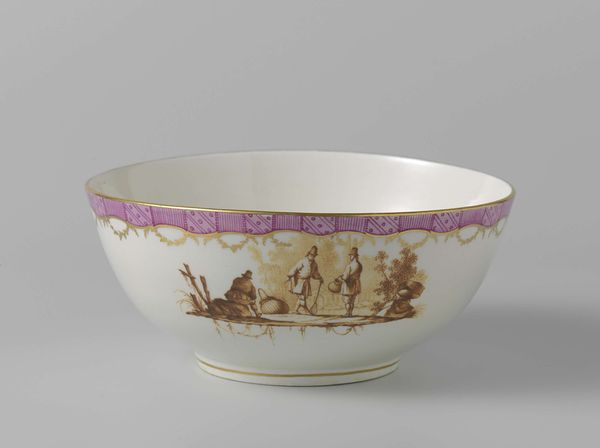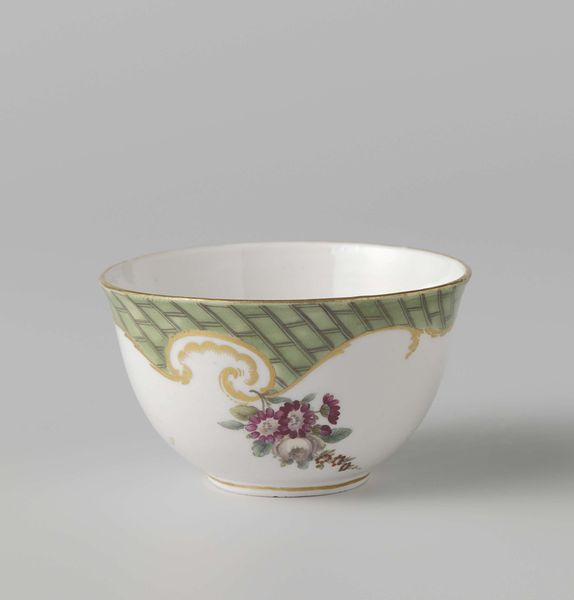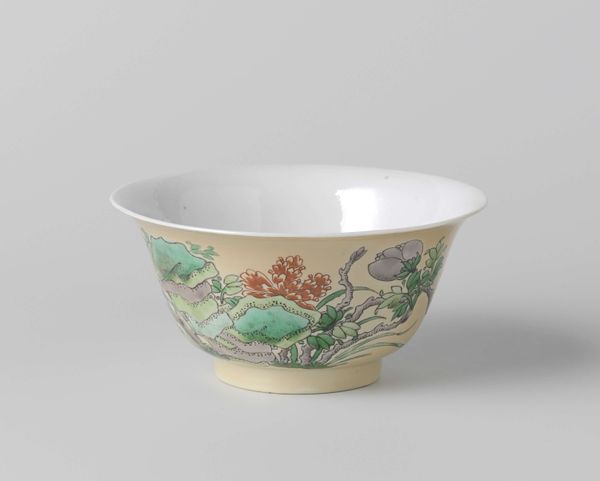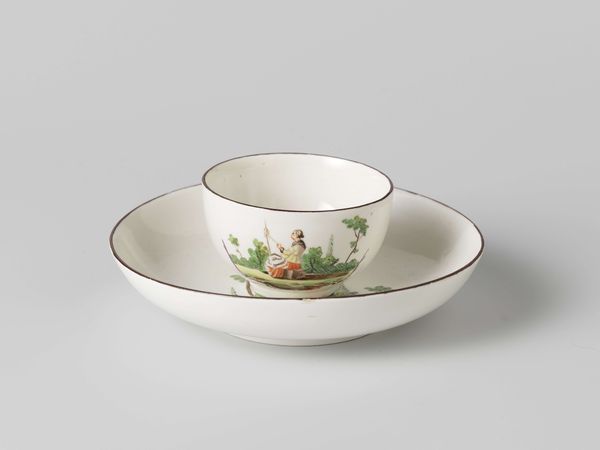
Dimensions: height 8.2 cm, diameter 18.5 cm
Copyright: Rijks Museum: Open Domain
This is a porcelain bowl, part of a coffee and tea service, made by the Loosdrecht porcelain factory. European porcelain factories sprang up in the 18th century, often with royal patronage, aiming to imitate the hard-paste porcelain that was then exclusively imported from China. This bowl, with its gilded rim and pastoral scenes, speaks to the rising fashion for tea and coffee drinking in Europe at the time, a ritual with strong associations of polite sociability and imperial trade. The Loosdrecht factory, like others of its kind, combined local techniques with imported styles, attempting to capture the refinement of the East within a specifically European aristocratic milieu. Such porcelain services became potent symbols of status and taste. Objects like this bowl remind us that art is always shaped by the economic, social, and political conditions in which it is made and used. A deeper understanding can be gained by exploring historical archives and collections.
